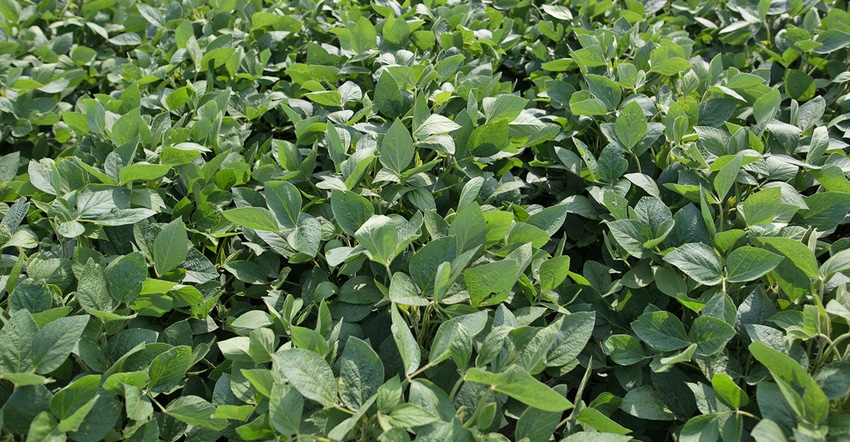December 20, 2017

By Kent Teveldal
Iron deficiency chlorosis, also known as IDC or iron chlorosis, affects soybean crops across many areas of Minnesota, as well as other states. This disease indicates iron deficiency in the soybean plant and results in yellowing of newly developed soybean leaves, while the veins remain green.

Kent Teveldal (Photo courtesy of WinField)

Soil often has an adequate amount of iron, but various soil conditions and environmental factors — for example, soils with heavy nitrate content or very wet soils — can aggravate IDC. And if iron is not in a soluble form, it cannot be taken up and used by the soybean plant. Very wet conditions can cause saline to rise into the root zone or higher. High-pH soils can inhibit iron uptake as well. The combination of high pH and high salt can make plants more prone to developing IDC.
According to University of Minnesota Extension, 2017 was a banner year for IDC. I know that in my area of southwestern Minnesota, IDC was quite prevalent. The good news is that there are things you can do to manage it.
If you had IDC in your fields this past year, or if it has been an ongoing issue for you, here are some ideas to talk with your agronomist about to help mitigate it in 2018:
1. Select the right soybean seed variety. Your first line of defense is to choose seed with a high tolerance to IDC. If your fields have large areas affected by IDC, choose the highest tolerance possible.
2. View historical imagery. Use ag technology to view archived satellite imagery of your fields from past years when IDC symptoms were most severe. Note the most affected areas, and start to create the zones in the field that are most likely to benefit from an in-furrow iron source. Work with your agronomist over the winter to identify fields where IDC has been a problem, and make a plan to manage it for the coming season.
Also, note the areas of your fields that are high-producing. Ask your agronomist about pushing soybean populations and implementing high management in these productive areas. This could help you optimize your yield and ROI potential in 2018.
3. Apply an iron source in-furrow. When you plant this spring, include an application of a chelated iron source. Chelation enables iron to be available to the plant and not tied up in the soil. Applying it in-furrow enables the product to get close to the soybean root for optimal effect. There are a number of products on the market designed to meet this need.
4. Scout your fields at V1—first trifoliate. Guided by your archived satellite imagery, get out into the field and see what’s happening with your soybean crop. If you see symptoms of IDC, a foliar iron application is likely necessary.
5. Do a foliar application of an iron source. If you see symptoms of IDC, a foliar application of iron can help increase its movement through the leaf. Iron plays an important role in plant immune systems and overall plant vigor. A foliar application of iron can also help promote plant health on your most productive, lush areas.
Spend time with your agronomist this winter to see how IDC has affected your fields in the past, and use this information to form a plan of attack to implement this spring. Using the technology and products necessary to stay on top of IDC will help you manage the disease without sacrificing yield or return on investment at season’s end.
Teveldal is an ag tech specialist with WinField United in southwestern Minnesota. Contact him at [email protected].
You May Also Like




